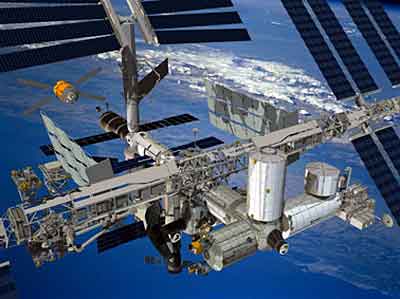ARISS contact planned with summer camp students
International Space Station Amateur Radio (ARISS) has received confirmation of the timing of ARISS radio contact between an astronaut aboard the International Space Station (ISS) and students from various Challenger Learning Centers located in six states. different in the United States.
ARISS conducts 60 to 80 of these special amateur radio contacts each year between students around the world and licensed amateur radio crew members aboard the ISS.
The Challenger Learning Center is a non-profit educational organization, created by the families of the Challenger STS-51L crew. The centers use space-themed simulated learning and role-play strategies to help students bring their STEM (science, technology, engineering, and math) classroom studies to life. This organization reaches hundreds of thousands of students and tens of thousands of teachers each year through its network of Challenger centers. The Buehler Challenger & Science Center, in Paramus, New Jersey, coordinated this ARISS contact with seven science centers in six U.S. states and seven cities, which will allow students at each center to ask a question during the contact.
The participating Challenger centers are:
Buehler (BYOO-ler) Challenger & Science Center – Paramus, NJ
Scobee Education Center – San Antonio, TX
Maine Challenger Learning Center – Bangor, ME
City of Ramapo Challenger Learning Center – Airmont, NY
Northwest Indiana Challenger Learning Center – Hammond, IN
Challenger Learning Center at Kentucky Science Center – Louisville, KY
Twin Tiers Area Challenger Learning Center – Allegany, NY
This will be a Telebridge multipoint contact via amateur radio allowing students to direct their questions to Astronaut Bob Hines, amateur radio call sign KI5RQT. Local Covid-19 protocols are adhered to, where applicable, for each ARISS contact. The downlink frequency for this contact is 145.800 MHz and can be heard by listeners within the ISS footprint which also encompasses the telebridge station.
The ARISS amateur radio ground station (telebridge station) for this contact is located in Glenden, Queensland, Australia. The ground station amateur radio volunteer team will use the call sign VK4KHZ to establish and maintain the ISS connection.
ARISS radio contact is scheduled for July 28, 2022 at 12:14 p.m. EDT (New Jersey) (4:14 p.m. UTC, 11:14 a.m. CDT, 10:14 a.m. MDT, 9:14 a.m. PDT).
The public is invited to follow the live broadcast on: https://www.youtube.com/user/ccsse
If time allows, students will ask these questions:
1. What life experience do you think helped prepare you to become an astronaut?
2. What training prepared you to live in smaller spaces for long periods in space?
3. Going into space should change your view of the world. What is your favorite experience of living in space that you like to share with your family and friends?
4. What does space food taste like?
5. What do you do when your equipment needs to be repaired outside the space station?
6. What is the most beautiful thing in space?
7. How did you personally feel going into space?
8. How are immune cells tested in the human immune system study?
9. I have a question regarding the Earth’s Surface Mineral Dust Sources (EMIT) survey. How does the warming and cooling of the atmosphere occur, and why do we need to monitor it?
10. Have you ever seen anything funny and/or funny from space?
11. Can you put contact lenses in space or do you have to wear glasses?
12. Can you see where day and night are on Earth from space?
13. What does it do on Station in microgravity?
14. What was the most exciting thing you discovered in space?
15. Who and what inspired you to go into space and possibly the moon?
16. How did you feel when you first stepped on the rocket and knew you were making your dreams come true?
17. What are you most looking forward to when you get home?
18.: I have a hamster called “Donut” and he’s a little brown dreamy ball of fur. Do you have pets and can you take them into space?
19. How do you communicate with your friends and family while on station?
20. What was/is the hardest part of being in space?
About ARISS:
Amateur radio on the International Space Station (ARISS) is a cooperative venture of international amateur radio societies and space agencies that support the International Space Station (ISS). In the United States, the sponsors are the Amateur Radio Satellite Corporation (AMSAT), the American Radio Relay League (ARRL), the ISS National Lab-Space Station Explorers, Amateur Radio Digital Communications (ARDC), and the Space communications and NASA navigation.
The main objective of ARISS is to promote the exploration of science, technology, engineering, arts and mathematics. ARISS does this by arranging scheduled contacts via amateur radio between crew members aboard the ISS and students. Before and during these radio contacts, students, educators, parents and communities participate in hands-on learning activities related to space, space technologies and amateur radio. For more information, see www.ariss.org.
Media Contact:
Dave Jordan, AA4KN
PR ARISS
Like us on facebook. Follow us on twitter. Research amateur radio on the ISS and @ARISS_status.
Discover ARISS on Youtube.com


Comments are closed.